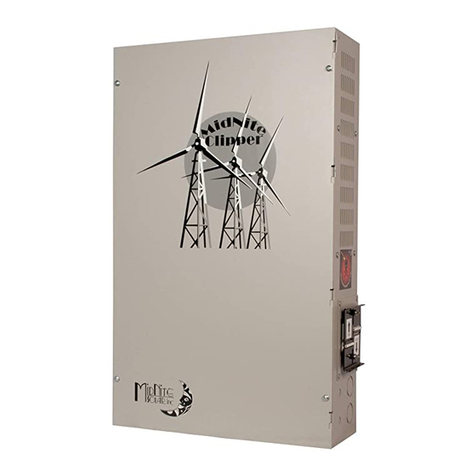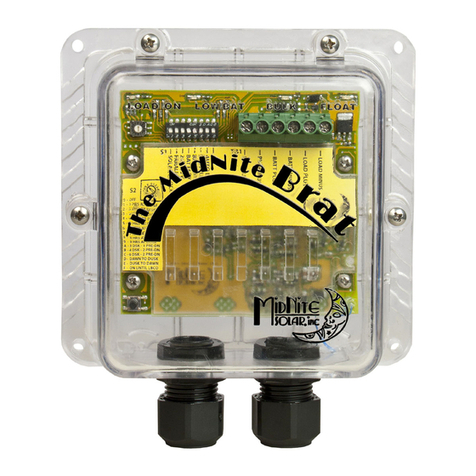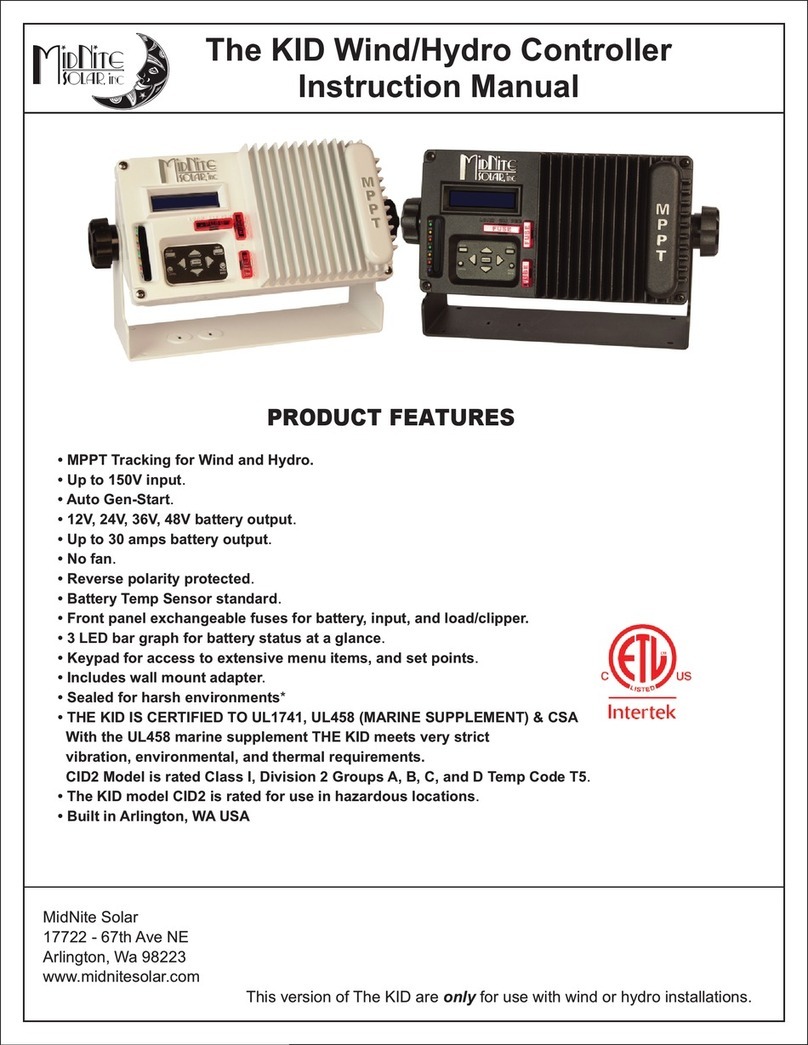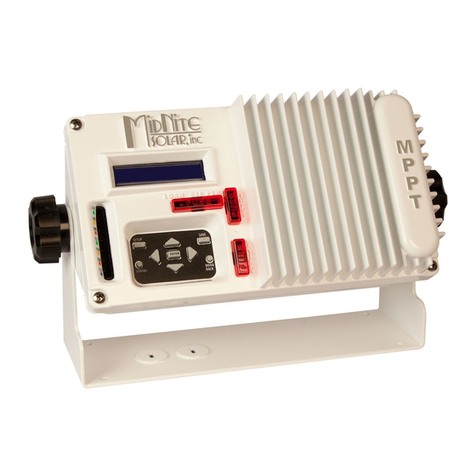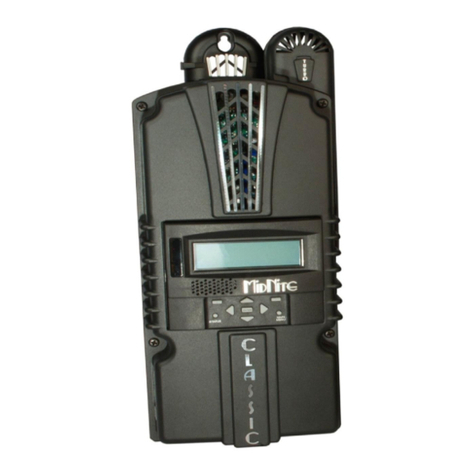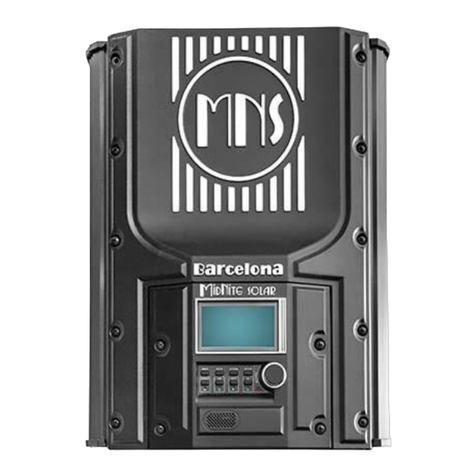Hawke’s Bay Manual
7| P a g e 10- 4 2 5 - 1 R E V : - F W : X X X
HOW TO KILL YOUR BATTERIES
Batteries are delicate and require proper attention, especially when off-grid. Think of your
batteries and solar equipment as a small nuclear power plant, hydro dam, or natural gas-fired
power plant. Just like any of those, your system needs DAILY attention to ensure it is performing
correctly and safely. We recommend the use of an independent battery monitor/alarm if you
have an expensive battery bank. Below is a list of some of the most common ways we have
seen people kill their battery bank.
•Using more than three parallel strings and not using common bus bars. With lead-acid
batteries, when you use more than three strings, it is very hard to properly charge the
middle strings. The only safe way to do this is to wire each string with equal length cables
to a common bus bar. Connect inverter cables to the farthest points on the busbars.
•Not watching to verify the Absorb or EQ times are set properly and that the equipment
actually charges for that period of time. Some equipment will have settings like “End Amps”
that can terminate Absorb early and, if set up wrong, can damage a battery.
•Not using ALL EQUAL LENGTH interconnect cables on each string. It is important that ALL
strings be wired EXACTLY the same. Any variance in resistance on one string versus another
will cause an imbalance and the batteries will suffer a shortened lifespan.
•Trusting a State of Charge (SOC) meter, which can lose calibration over time and give you
false readings. You need to verify specific gravity and or verify the charge voltage is being
met. Never fully rely on the SOC %; it is just a good, quick reference.
•Routinely using more than 50% of the capacity of the lead acid battery. Using more than
half the battery capacity drastically shortens the batteries life; occasionally is fine, but daily
will kill lead acid batteries in months.
•Not leaving ample space between cells for cooling. We recommend at least one inch
between the cells for cooling. Ask the battery manufacturer what they recommend.
•Not having enough charge current to properly charge the size of the battery you have.
Consult the battery manufacturer for the minimum charge current.
•Using tap water or other liquids instead of distilled water in a flooded battery. The minerals
in the tap water will destroy a battery.
•Not verifying the temperature compensation neutral point (typically 25°C) and the milli volts
per degree C per cell (typically -5mV).
•Not verifying you are charging to the voltage supplied by the battery manufacturer.
•Not fully charging your lead acid batteries at least once a week.
•Failing to keep all connections clean.
WIRING REQUIREMENTS
•The NEC (National Electric Code, ANSI/NFPA 70) for the United States and the CEC

